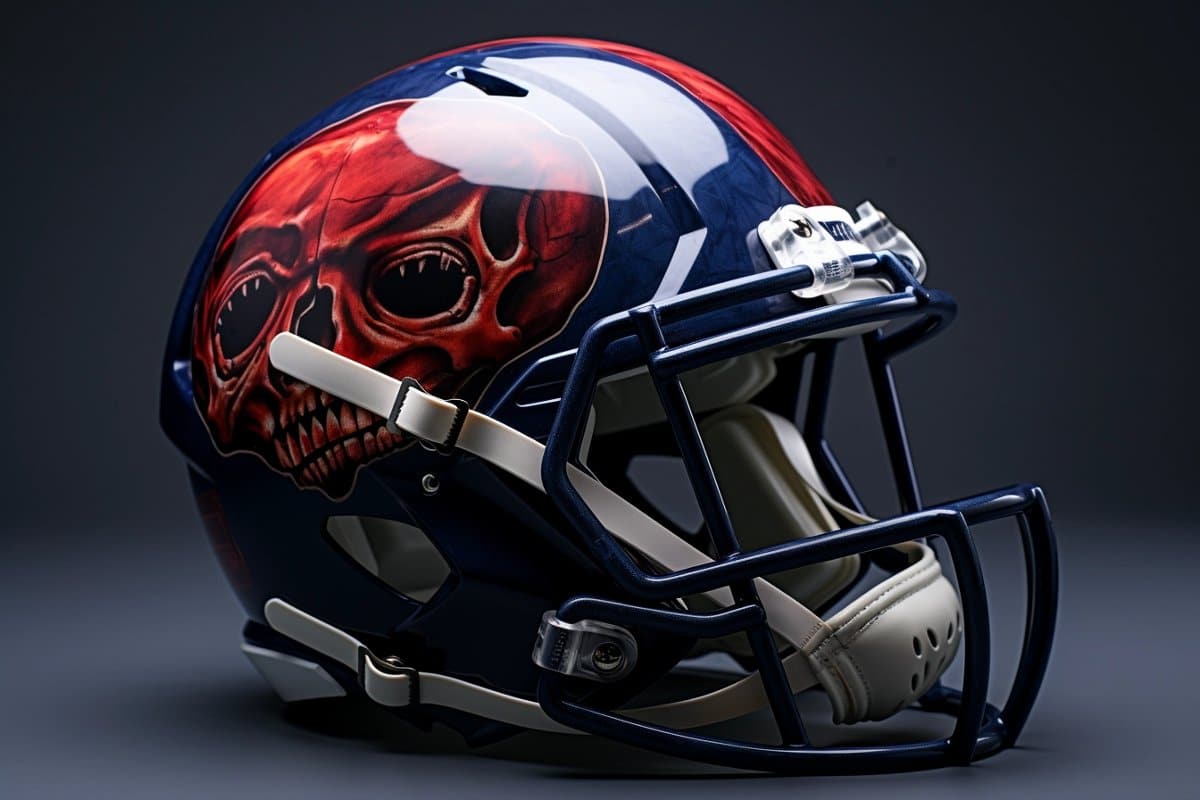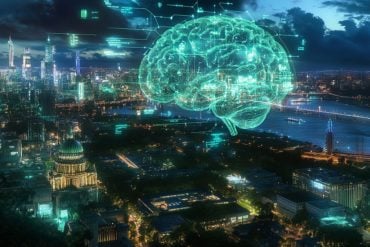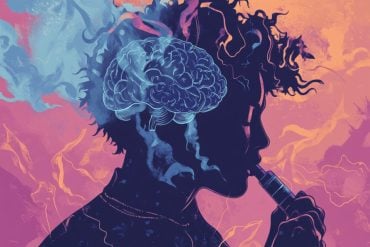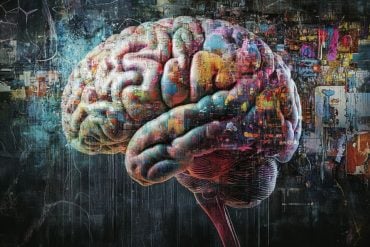Summary: A new study on former NFL athletes reveals prolonged high levels of the repair protein TSPO, indicating long-term brain inflammation post-injury. This protein, usually elevated after a traumatic brain injury (TBI) as part of the immune response, was found at high levels years after athletes ended their sports careers.
The study compared brain scans and cognitive assessments of ex-NFL players with non-collision sport athletes, showing higher TSPO levels and poorer memory in the former group. This research underscores the lasting impact of repeated mild TBIs in collision sports and guides future treatment strategies.
Key Facts:
- TSPO levels, which increase after a TBI, were found to remain high in former NFL players, suggesting long-term brain repair processes.
- Former NFL athletes showed higher TSPO levels and worse performance in memory tests compared to non-collision sport athletes.
- The study’s findings have implications for understanding and treating long-term cognitive effects in athletes and other populations suffering from repeated mild TBIs.
Source: Johns Hopkins Medicine
In a new study using brain scans of former NFL athletes, Johns Hopkins Medicine researchers say they found high levels of a repair protein present long after a traumatic brain injury such as a concussion takes place.
The repair protein, known as 18 kDa translocator protein (TSPO), is known to be present in the brain at high levels in the immediate aftermath of brain injury as part of the inflammatory response and to facilitate repair.
The new findings, published Oct. 30 in JAMA Network Open, suggest that brain injury and repair processes persist for years after players end collision sports careers, and lead to long-term cognitive problems such as memory loss.

“The findings show that participating in repeated collision sports like football may have a direct link to long-term inflammation in the brain,” says Jennifer Coughlin, M.D., associate professor of psychiatry and behavioral sciences at the Johns Hopkins University School of Medicine. Ongoing studies like the current one, she says, add details about how the brain heals — or doesn’t — and how repeated brain injuries, even mild ones that players routinely shake off, may over time affect cognitive abilities.
Coughlin notes that TSPO is a protein associated with immune cells in the brain known as microglia. This protein is always present at relatively low levels. When a person experiences a traumatic brain injury (TBI) of any kind, TSPO levels are greatly increased as part of the immune response.
Past studies have shown the presence of elevated levels of TSPO up to 17 years after injury, which, researchers say, indicates the brain remains in a heightened state of injury and repair long after the traumatic event.
In the new study, researchers examined MRI and PET scans that were completed between April 2018 and February 2023 of 27 former NFL players. They compared these brain scans to those acquired from 27 non-collision sport athletes (swimmers) who all participated for at least two years in National Collegiate Athletic Association Division I, II or III level competition.
All athletes were between 24 and 45 years of age, and all were male. All participants in both groups underwent cognitive assessments, including memory tests.
Results show that former NFL players performed worse in learning and memory tests than the swimmers. Additionally, they found that levels of TSPO in the former NFL athletes were higher on average compared with the swimmers, particularly in areas of the brain associated with memory and attention.
“These findings are relevant to both collision sport athletes and other populations that suffer from single or reoccurring mild TBIs, including those experienced during military training and repeated head banging behaviors in children,” says Coughlin.
“Since TSPO is associated with repair, we don’t recommend the use of drugs or other interventions at this time. Instead, we will continue to monitor TSPO levels through more research, in order to test for sign of resolution of the injury with more time away from the game.”
Coughlin stresses that if there are cases where TSPO remains high, researchers will study those factors that associate with a vulnerability to lasting injury after a professional career in American football. Ultimately, they aim to guide strategies for the use of immunomodulating treatments (possible anti-inflammatory medications) to heal the brain when needed.
Researchers say they plan to continue to follow the study’s population of former NFL athletes to track TSPO levels over time to see whose brain heals and whose does not. The goal is to inform development of medications and personalized guidelines for rest periods after repeated brain injuries.
The new research adds to a growing stack of evidence that collision sports that involve repeated, even low-level, blows to the head, including football, soccer and boxing, may lead to dementia and other forms of cognitive disorders.
Other scientists who contributed to this research are Mary Katherine Brosnan, Robert Dannals, Yong Du, Andrew Hall, Daniel Holt, Jessica Kilgore, Wojciech Lesniak, William Mathews, Il Minn, Hwanhee Nam, Riley O’Toole, Martin Pomper, Steven Rowe, Leah Rubin, Laura Shinehouse, Gwenn Smith, Ana Soule, Shannon Eileen Sweeney, Cykyra Thomas, Mark Yoon and Adeline Zandi of The Johns Hopkins University; Samantha Bureau and Michael Burke of the Concussion Legacy Foundation; Christopher Nowinski of the Concussion Legacy Foundation and Boston University; and Michael Kassiou of the University of Sydney.
Christopher Nowinski is a volunteer member of the Mackey-White Committee of the National Football League Players Association, for which he receives travel support. He is also an adviser and options-holder with Oxeia Biopharmaceuticals, LLC, PreCon Health and StataDx; has served as an expert witness in cases related to concussion and CTE and is compensated for speaking appearances and serving on the Players Advocacy Committee for the NFL Concussion Settlement; and is employed by the Concussion Legacy Foundation, a 501(c)(3) nonprofit that receives charitable donations from the public. All other authors have no conflicts of interest to disclose.
Funding: This research was supported by the National Institutes of Health.
About this TBI and neurology research news
Author: Kristen Crocker
Source: Johns Hopkins University
Contact: Kristen Crocker – Johns Hopkins University
Image: The image is credited to Neuroscience News
Original Research: Open access.
“Imaging Brain Injury in Former National Football League Players” by Jennifer Coughlin et al. JAMA Network Open
Abstract
Imaging Brain Injury in Former National Football League Players
Importance
Pilot studies that involved early imaging of the 18 kDa translocator protein (TSPO) using positron emission tomography (PET) indicated high levels of TSPO in the brains of active or former National Football League (NFL) players. If validated further in larger studies, those findings may have implications for athletes involved in collision sport.
Objective
To test for higher TSPO that marks brain injury and repair in a relatively large, unique cohort of former NFL players compared with former elite, noncollision sport athletes.
Design, Setting, and Participants
This cross-sectional study used carbon 11–labeled N,N-diethyl-2-(4-methoxyphenyl)-5,7-dimethylpyrazolo[1,5-a]pyrimidine-3-acetamide positron emission tomography ([11C]DPA-713 PET) data from former NFL players within 12 years of last participation in the NFL and elite noncollision sport athletes from across the US. Participants were enrolled between April 2018 and February 2023.
Main outcomes and measures
Regional [11C]DPA-713 total distribution volume from [11C]DPA-713 PET that is a measure of regional brain TSPO; regional brain volumes on magnetic resonance imaging; neuropsychological performance, including attention, executive function, and memory domains.
Results
This study included 27 former NFL players and 27 former elite, noncollision sport athletes. Regional TSPO levels were higher in former NFL players compared with former elite, noncollision sport athletes (unstandardized β coefficient, 1.08; SE, 0.22; 95% CI, 0.65 to 1.52; P < .001). The magnitude of the group difference depended on region, with largest group differences in TSPO in cingulate and frontal cortices as well as hippocampus. Compared with noncollision sport athletes, former NFL players performed worse in learning (mean difference [MD], −0.70; 95% CI, −1.14 to −0.25; P = .003) and memory (MD, −0.77; 95% CI, −1.24 to −0.30; P = .002), with no correlation between total gray matter TSPO and these cognitive domains.
Conclusions and relevance
In this cross-sectional study using [11C]DPA-713 PET, higher brain TSPO was found in former NFL players compared with noncollision sport athletes. This finding is consistent with neuroimmune activation even after cessation of NFL play. Future longitudinal [11C]DPA-713 PET and neuropsychological testing promises to inform whether neuroimmune-modulating therapy may be warranted.






